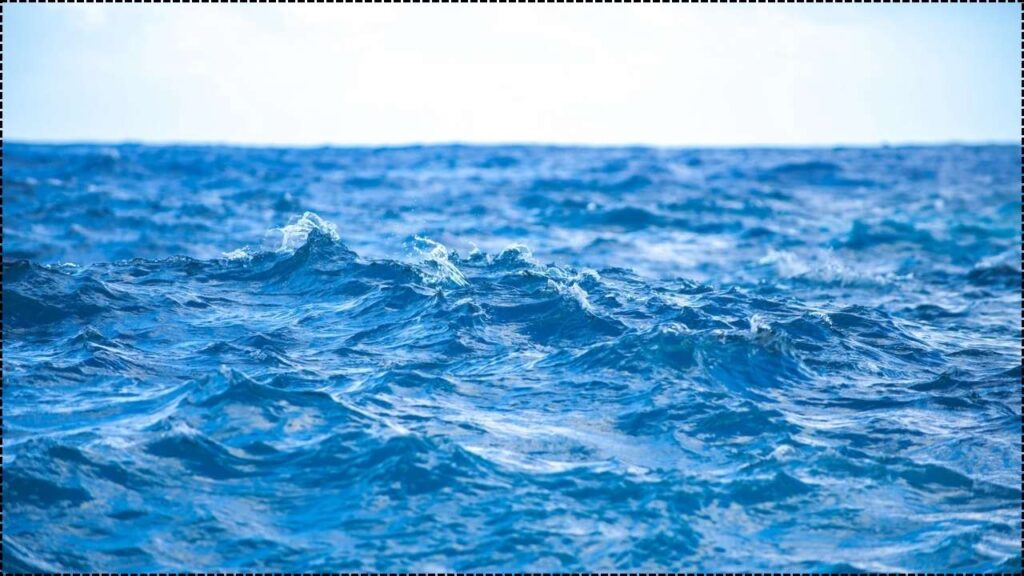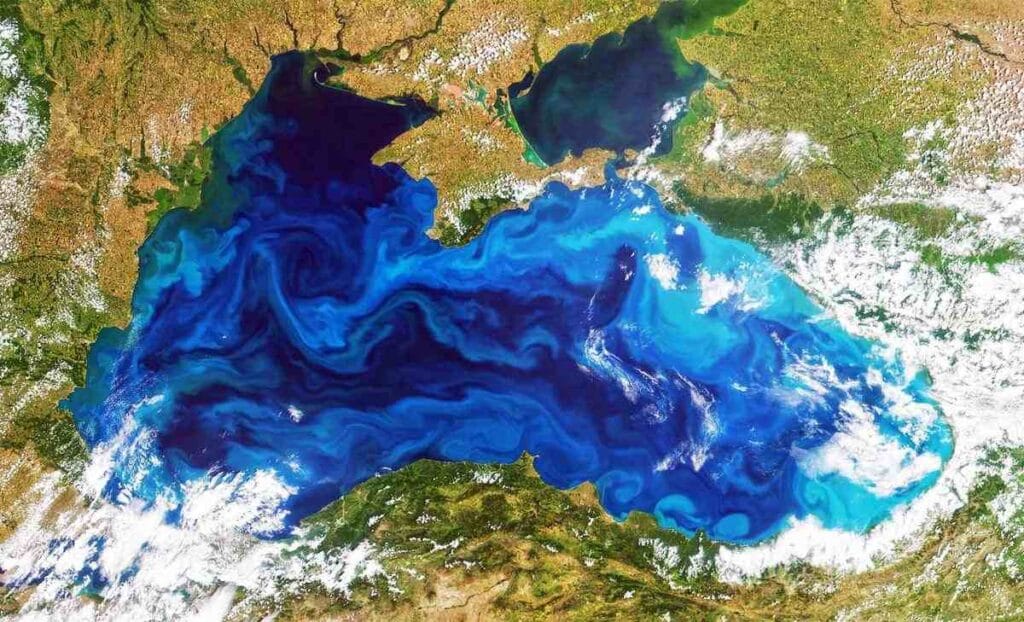The world’s oceans are gently shifting their colors, a quiet transformation that whispers urgent concerns for marine life, coastal communities, and our shared climate. Over the past 20 years, satellite data reveal that 56% of ocean waters have changed hues: tropical seas shimmer greener, polar waters glow bluer, and 21% grow darker, hinting at fading sunlight zones.

These heartfelt changes reflect shifts in phytoplankton—tiny, vital marine plants that anchor the ocean’s food chain—calling us to care for our planet with kindness and action to protect its delicate balance. That’s no mere view from space—it’s a warning. If plankton shift, the whole ocean rhythm changes—and that includes the fish we catch, the jobs we rely on, and the very air we breathe.
World’s Oceans Are Quietly Changing Color
| Theme | What We’re Seeing | Why It Matters |
|---|---|---|
| Ocean color shift | 56% of oceans altered color (2003–2022) | Indicates widespread ecological shifts |
| Sunlight loss | 21% of oceans darker, 9% losing 50 m, 3% losing 100 m of photic zone | Reduces photosynthesis & squeezes marine habitats |
| Fish migrations | Species moving ~35 km per decade to cooler waters | Threatens fisheries and coastal economies |
| Carbon link | Plankton absorb ~30–40% CO₂ | Essential for moderating climate |
| Official reference | NASA Ocean Color | Real-time ocean monitoring data |
The world’s oceans are softly shifting their colors, painting a story far beyond their beauty—a heartfelt signal of change. Green, blue, or darkening waters speak of carbon, climate, marine life, and the communities that cherish them. As fish gently migrate, coral reefs fade, and CO₂ absorption weakens, these vibrant hues call out with care, urging us to act with kindness and urgency to protect our planet’s delicate balance and nurture its precious ecosystems.
Thankfully, science’s got answers—PACE satellites, international observatories, and policy-ready data. But now we’ve got to roll up our sleeves, support the research, make smart choices, and push for change. One ocean, one planet—it’s on us.

Why Ocean Color Matters
1. Phytoplankton Powerhouses
These microscopic organisms shimmer green thanks to chlorophyll. Together, they generate around 50% of Earth’s oxygen and soak up tons of CO₂ (science.nasa.gov). When their numbers or types shift, the global carbon cycle feels it.
2. Food Web Foundation
Phytoplankton feed zooplankton, which feed fish—who feed bigger fish, seabirds, and marine mammals. Change the plankton level, and the whole food chain wobbles.
3. Sunlight = Life Underground
The photic zone—where sunlight penetrates—shrunk by 50–100 m in many regions . Without light, photosynthesis slows, affecting corals, juvenile fish, and ecosystems relying on them.
How Ocean Color Is Shifting
Tropics Turning Greener
NASA satellites like MODIS‑Aqua and recent studies confirm tropical waters are getting greener due to warming and shifts in nutrients (theguardian.com).
Polar Blues Deepen
In polar and mid-latitude regions, deeper blue shades point to shifts in plankton types or clearer waters .
Dark Zones Appear
About 21% of ocean waters have darkened. Coastal regions darken from sediment, while offshore changes link to climate-driven ocean currents .
Scientific Methods
- Satellite Observations – MODIS-Aqua, VIIRS, and PACE satellites track multicolor reflectance since 2002.
- Comprehensive Spectrum – Scientists analyze full spectra, not just chlorophyll, to detect subtle trends .
- Model Comparison – Observed shifts match climate models including greenhouse gas emissions—but not those that exclude human influence (zmescience.com).
- Ground Truthing – Ship, buoy, and lab data complement satellite info for accuracy.
Real-World Impacts
Migration on the Move
Fish and plankton species are migrating ~35 km per decade, shifting ecosystems and changing fishing patterns.
Fisheries Under Pressure
California’s anchovy, tuna, and dorado populations have moving north—impacting local fisheries and the economies that depend on them .
Carbon Absorption Dropping
With plankton declines or shifts, CO₂ absorption capability could fall, influencing global climate.
Toxic Blooms & Dead Zones
Warmer waters + runoff = harmful algal blooms and oxygen scavenging zones—threats to marine life and human health .
Coral Crisis
84% of global coral reefs have experienced bleaching—threatened by warming, light loss, and ecosystem stress .
Related Links
Solar Orbiter Captures Rare First-Ever Glimpse of the Sun’s South Pole Up Close
Hubble’s Stunning New Galaxy Photo Packed with Baby Stars 64 Million Light-Years Away
Cutting-Edge Science & Missions
NASA’s PACE
Launched Feb 2024, the Plankton, Aerosol, Cloud, ocean Ecosystem (PACE) satellite uses a hyperspectral Ocean Color Instrument capturing 200+ wavelengths, monitoring plankton types, aerosols, and clouds in real-time.
PACE helps:
- Identify plankton species and blooms
- Track harmful algal blooms internationally
- Feed data to fishery managers and health agencies.
Ocean Observatory Networks
Global systems—satellites, buoys, labs—work in tandem to provide real-time marine intelligence for fisheries and conservation policies .
Predictive Modeling & Policy
Integrating ocean color data into eco‑models helps set marine protected areas, fishing quotas, and climate strategies .
What You Can Do
- Cut Your Carbon – Ride public transit, minimize energy use, promote renewables. Every ton matters.
- Choose Sustainable Seafood – Look for MSC or Aquaculture Stewardship Council labels.
- Stay Informed – Tap NASA PACE and NOAA data online to learn what oceans are telling us.
- Back Science & Conservation – Support policies funding oceanic research and blue economy efforts.
- Engage Locally – Volunteer in coastal clean-ups; help reduce nutrient runoff that fuels algal blooms.
FAQs
Q1: How fast is the change happening?
Satellite data show 56% of global oceans changed color in just 20 years; 21% darkened significantly.
Q2: Is this harmful to marine life?
Absolutely. Light loss and plankton shifts disrupt food webs, squeeze habitats, stress fisheries, and reduce biodiversity .
Q3: Are these changes reversible?
They could be with aggressive emissions cuts, pollution control, and protected areas—but time’s not on our side.
Q4: Can the public track it?
Yes! NASA’s Ocean Color and NOAA platforms offer public access. Use the data to learn and advocate.








